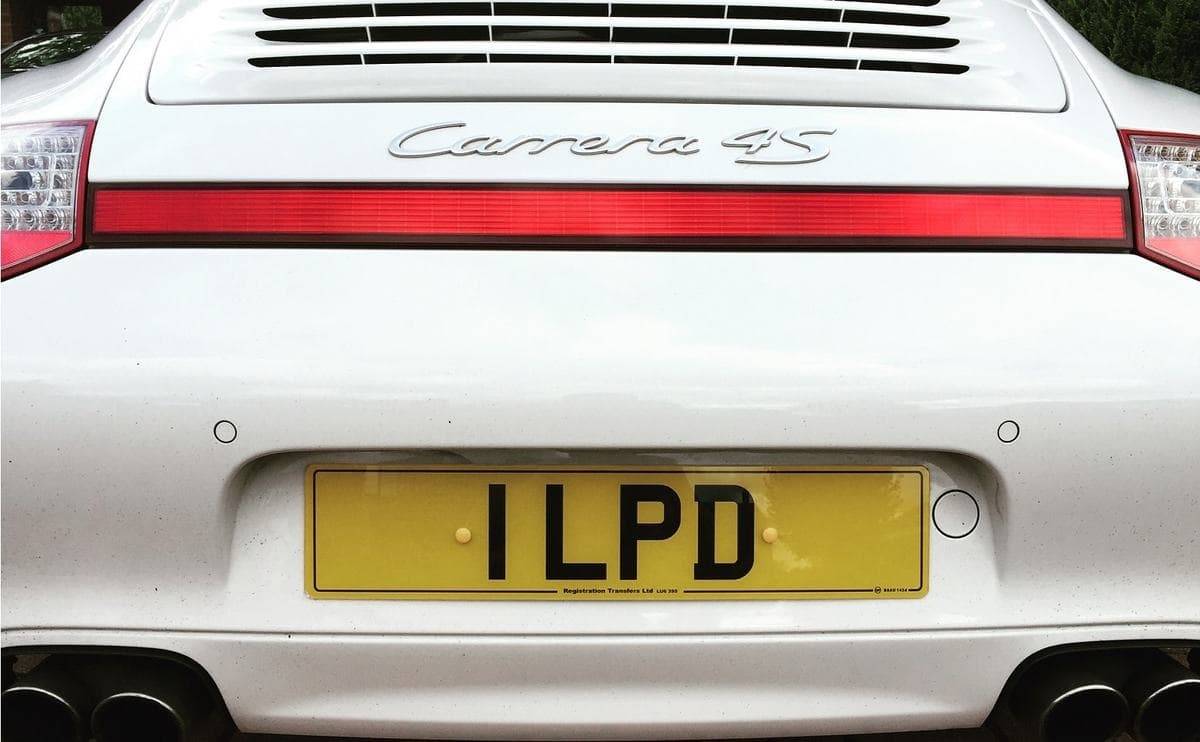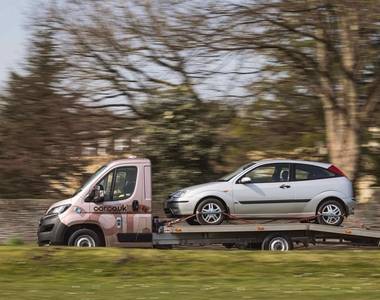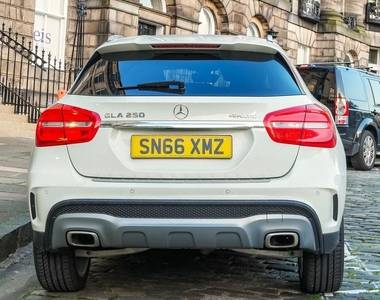While number plates provide the police and other authorities with an easy way to identify or track a car that’s been lost, stolen or involved in an accident, VIN numbers can tell them much more. Much more detailed, these longer codes are used for a greater variety of tasks and are far more difficult to be removed from vehicles.
The answers to what the letters and numbers that they include stand for, where to find them on your car and how to investigate them online can all be found here. If you’ve ever wondered what’s the difference between your number plate and VIN, read on for an in-depth guide on everything you need to know about these codes.
What is a VIN number?
A VIN number is usually a 17-digit number solidly stamped and engraved onto various parts of a car when it’s built. VIN stands for Vehicle Identification Number and it is a code containing both letters and digits. This code is unique to your car, making it the equivalent of a human fingerprint for a vehicle.
Sometimes the VIN of a car is referred to as its chassis number, due to the fact that when it’s built the identification code is stamped on this part of the vehicle.
What is the difference between your number plate and VIN?
While both VINs and number plates are designed to provide information about your vehicle, how they do this and the level of detail they deliver differs considerably.
Number plates provide very basic and easily seen information on your car. The two letters that start your car’s plate describe where it was registered. The general region is indicated in the first letter, with the second representing its nearest office of the DVLA. The two middle digits state a vehicle’s age and the final three letters are generated randomly to provide your car with a unique identity. A number plate is always in plain sight for the authorities to easily check.
A VIN in contrast isn’t printed on a plate but stamped or engraved into the chassis of your vehicle at the time it’s built. Unlike a removable or transferable licence plate, a VIN will remain with a vehicle from its beginning to its end. On the chassis, inside the driver’s door and sometimes below the windscreen, the VIN can be found in multiple locations around your car. Unlike the more simplistic details offered by a number plate, a VIN gives in depth information on your vehicle.
Where to find the VIN number?
The VIN of your car can be found in several different locations around the vehicle. It’ll be firmly stamped into your car chassis and can typically be found within the engine bay engraved on a plate, as well as just underneath the plastic trim surrounding either the passenger or driver door opening.
Auto manufacturers may place repeated instances of the VIN throughout different sections of the car. In the UK, it's very common for cars sold to display a clearly visible VIN close to the bottom of their windscreens.
The VIN is placed in this visible location for the benefit of the police, enabling them to easily access it to process identity checks quickly when necessary. Often VINs are carried along with other vehicle information on plates.
Your car’s VIN can also be found in your V5C registration document, commonly called a logbook.
What does a VIN number look like?
A VIN is a far longer string of characters than a licence plate. Typically, you’ll find VINs are 17 characters in length, although they can be less if your vehicle was manufactured prior to 1981. VINs comprise a combination of both letters and numbers which refer specifically to different details of the vehicle they’re attached to.
What does a VIN number tell you?
A VIN number offers far greater detail about your car than a licence plate. A VIN is the vehicle equivalent to a fingerprint and will inform you or the authorities of the entirety of its unique specifications and features.
Broken down simply, the first section of your VIN indicates your car’s country and manufacturer; the second part provides a vehicle description and the remaining characters comprise the identifier.
The VIN can tell you where the vehicle was built and who its manufacturer was. It can also show you if its fuel tank was designed to run on flexible fuel. The official security code of the manufacturer can be discovered in a VIN, along with the car’s engine type, brand and size. The very origins of your car are also stated in the VIN, including its model year, the plant that assembled it and its serial number.
VINs are used for a vast number of different tasks, including tracing registrations, managing manufacturer recalls, handling warranty claims and tracking down cover from insurance policies. The 17-digit number is also instrumental in assisting the authorities in cutting down on car crimes such as theft and the buying and selling of stolen vehicles.
Just like a fingerprint, a VIN can’t be altered, unlike more highly visible licence plates which can very simply be swapped out to hide a car’s real identity from the authorities.
A registration number is emblazoned on plates which are then attached to a car. The VIN of a vehicle on the other hand is physically stamped into its integral parts, from the chassis to the engine bay. From the very beginning when the car is built, this code is stamped into it and remains attached for as long as the vehicle lasts. If a car is involved in a crime or is lost, this makes it far easier for the authorities to identify it and track it down successfully.
How to find a VIN number without a car
You can still find out what a vehicle’s unique VIN is without the car present. The VIN is listed inside the V5C registration document.
Can you get a new VIN number for a car?
You might require a new VIN number if you possess a rebuilt, kit car or significantly altered vehicle that no longer matches the specification outlined in your original VIN. In this circumstance, the DVLA will typically need to assess your altered vehicle.
It may be possible to keep the original registration number of your car if you can prove its original VIN. If you can’t provide this however, you may need to make an application for a new identity number. The DVLA will issue you with a letter that authorises you to get your vehicle stamped with a new VIN if it passes its assessment.
At this point, you’ll be required to register your vehicle, but this action can only be completed after the DVLA gets full confirmation that it’s been correctly stamped with the new VIN.
How can I check the VIN number for free?
Thoroughly checking the VIN of a car is the most secure way of being certain of its identity. It’s also the best way to be sure if a vehicle has any criminal history. Vehicle registration offices and auto manufacturers both maintain databases containing VIN numbers in order to validate and identify cars.
When purchasing a used vehicle, one of the most important steps is to make sure that the VIN stamped on your vehicle matches the number in your V5C logbook. Never buy a car when these two numbers are not identical. If you discover this to be the case, do not buy the vehicle under any circumstances. It’s worth checking the VIN at as many points around the car as possible. Look at the vehicle’s chassis, inside the plastic seal around either the driver or passenger door frame, on the plate within the engine bay and just beneath the windscreen.
It’s a criminal offence to transfer a VIN from one car onto another. Referred to as “VIN number cloning” criminals will transfer a legal identity onto a stolen vehicle and fashion forged documents to disguise the car’s identity.
VINs have been specifically designed to combat crime of this kind. There should never be any uncertainty regarding these identification numbers, so if you find they don’t match, make sure you walk away from the sale.
You can discover information held on a specific vehicle in the UK online through the DVLA. There are also multiple sites online which offer a free service to check VINs. You can find a car’s unique identification code either in the V5C registration document or on the vehicle itself.











